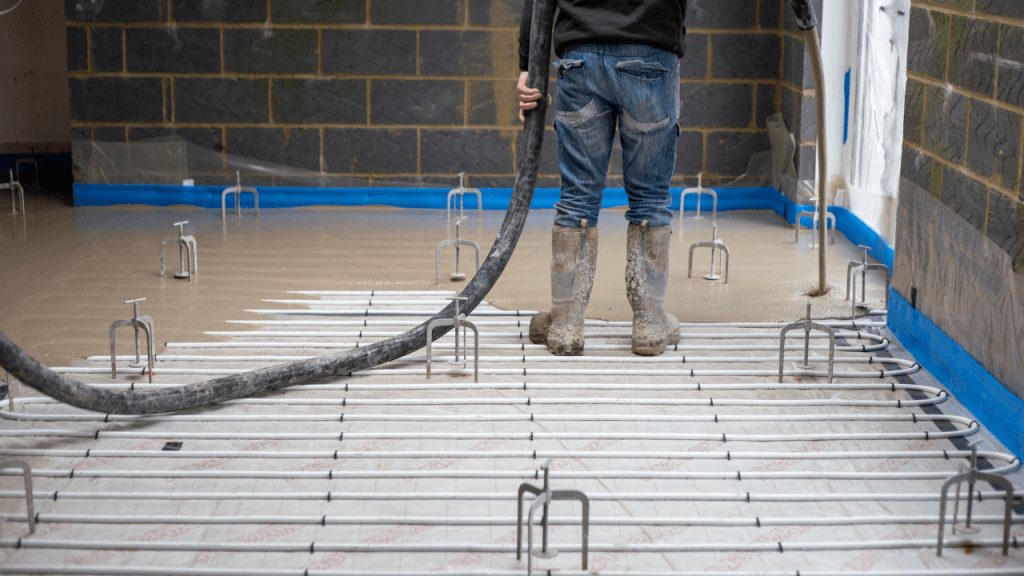How to Force Dry Screed Correctly

While liquid screeds are walkable within 14-48 hours, they have to be fully dry before flooring finishes can be laid. Even in optimal drying conditions, this can take a full month. On a tight project schedule, it’s no surprise that many turn to force drying.
That said, it’s very easy for force drying to go wrong, resulting in a shrunk, delaminated or cracked floor. When liquid screed dries too quickly, it compromises the structural integrity of the floor, causing problems in the long term.
Can You Force Dry Liquid Screed?
Yes, there are a number of techniques available to ensure that environmental conditions are optimal for faster drying times. Before these can be used, the screed has to be allowed to dry naturally for seven full days.
This is the period of time when screed cures, and hastening the drying process at this stage causes issues. After seven days have passed, one or more of the following methods can be used.
Dehumidifiers
One of the factors that affects drying time is the moisture content present in the air. When humidity is too high, water particles contained in the screed find it difficult to detach and enter the air.
A dehumidifier eliminates excess moisture in the air and either stores it in a container for disposal, or can be connected via a hose to a waste water outlet. When using a dehumidifier, the target level should be 65% humidity as this is both achievable and good for drying.
Underfloor Heating
If an underfloor heating system has been installed in the floor, it can be force dried as part of the heating commissioning process. It is important to ask your underfloor heating engineer for precise instructions best for your floor.
This is because it highly depends on the screed formula you have used, your heating design, and the depth; anhydrite screed for example, is more thermally conductive. And a thicker screed may need more time to dry naturally before heating can begin.
If no heat source is installed yet, a temporary electric boiler can be connected to the heating to provide hot water. Typically, a three-week heating and cooling cycle will significantly boost the drying process. Again, follow the advice of the underfloor heating for best results.
Space Heaters
For drying liquid screed without central heating, space heaters are a good method to circulate warm air and facilitate evaporation. Heaters are often used alongside dehumidifiers to create a stable environment suitable for drying.
Controlled Ventilation
Air circulators are another tool to help create an ideal drying environment, helping heat reach the screed and lifting humid air further away. While opening windows may seem logical as a natural ventilation tactic, it allows cold air and excess humidity to enter the property, which is not advisable.
Use a Moisture Meter for Screed Testing
It isn’t easy to tell at a glance if your concrete or anhydrite screed is sufficiently dry. Accurate and professional screed testing should be conducted before proceeding to the next stage of your construction project. This must be done in multiple locations across rooms and screeds with large surface areas to make sure no moisture remains.
At EasyFlow we offer a professional moisture meter for screed testing service. If our test shows the screed is sufficiently dry, or requires more time we will provide additional advice for when the screed should be ready and what can be done to facilitate the drying process. Contact us today for more information.




Where To Find Us